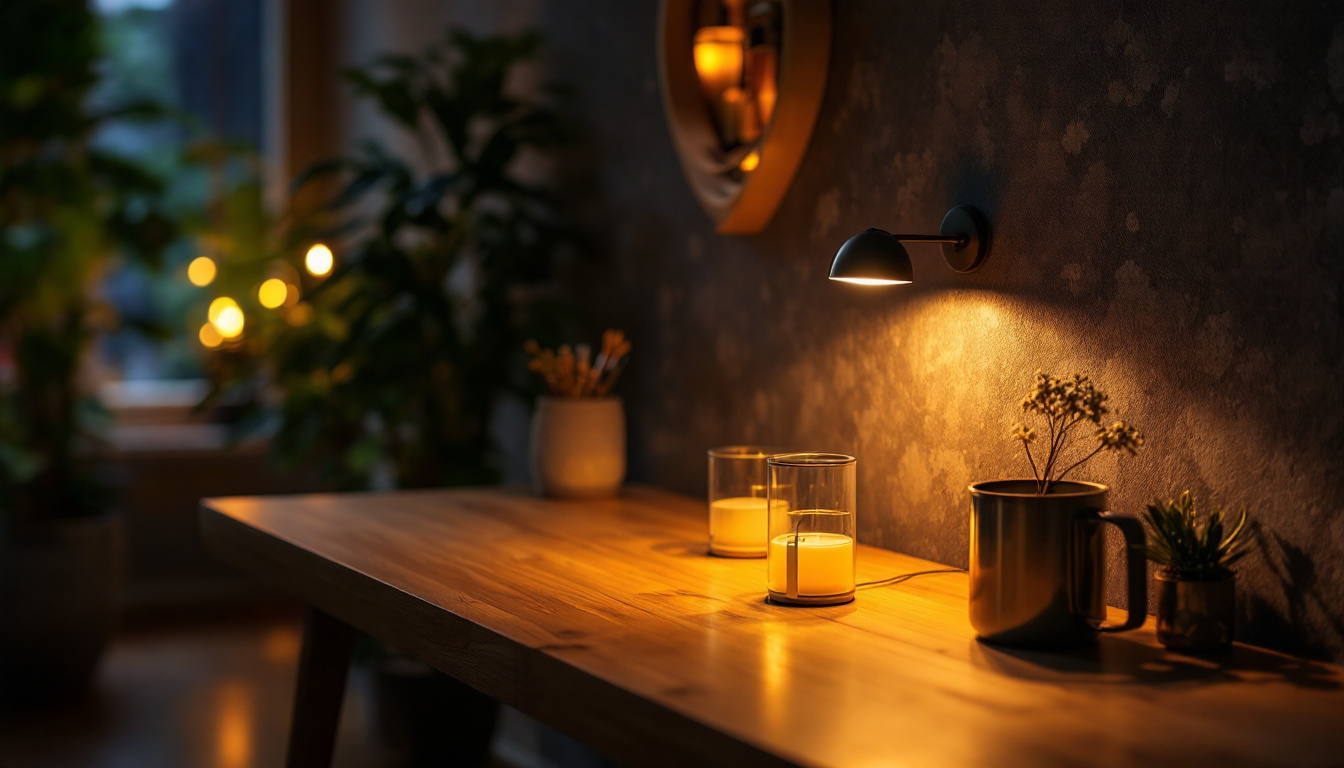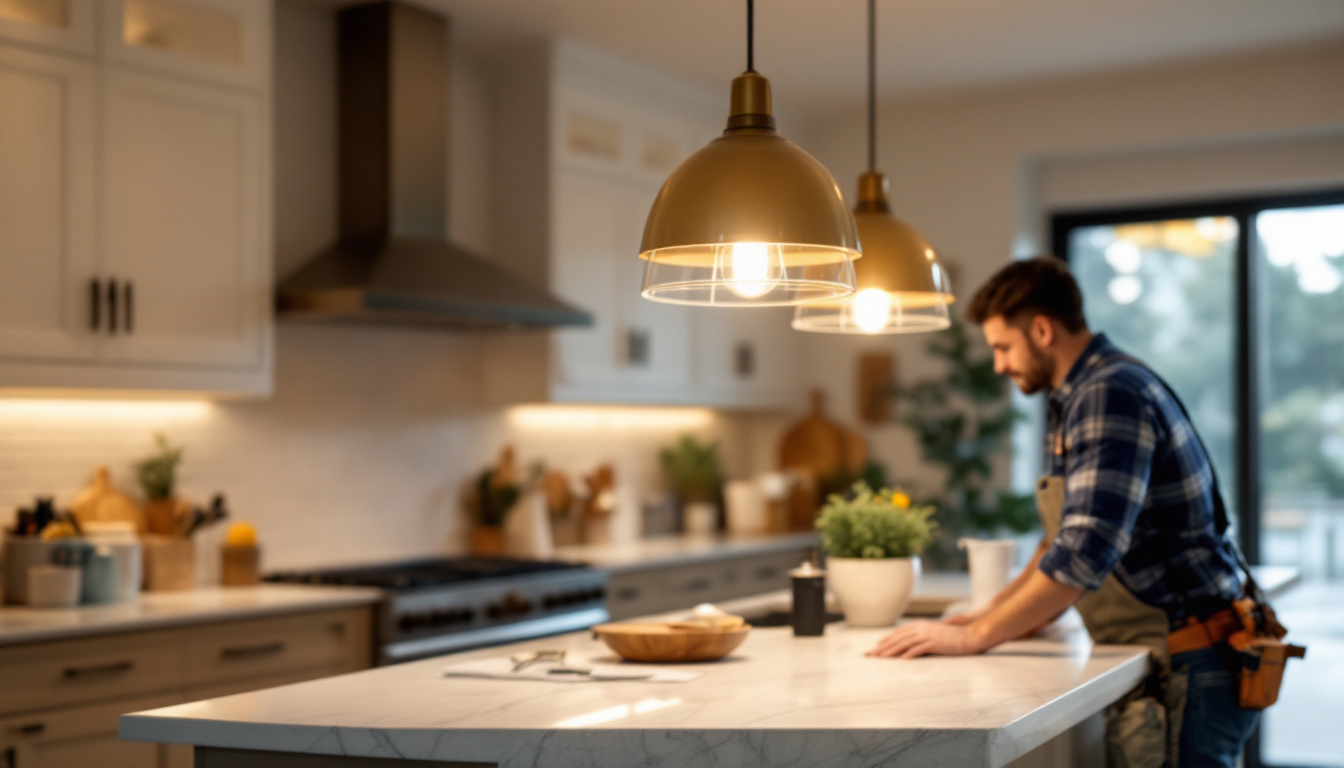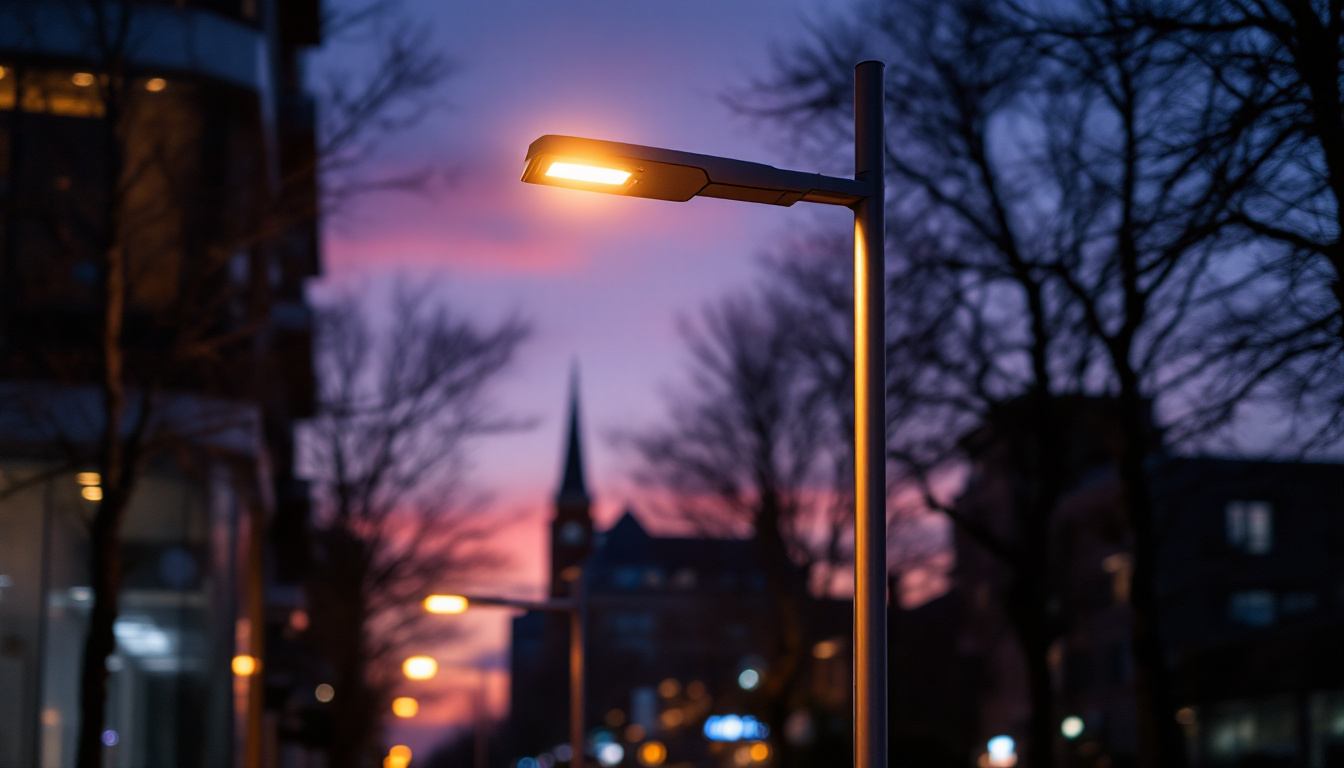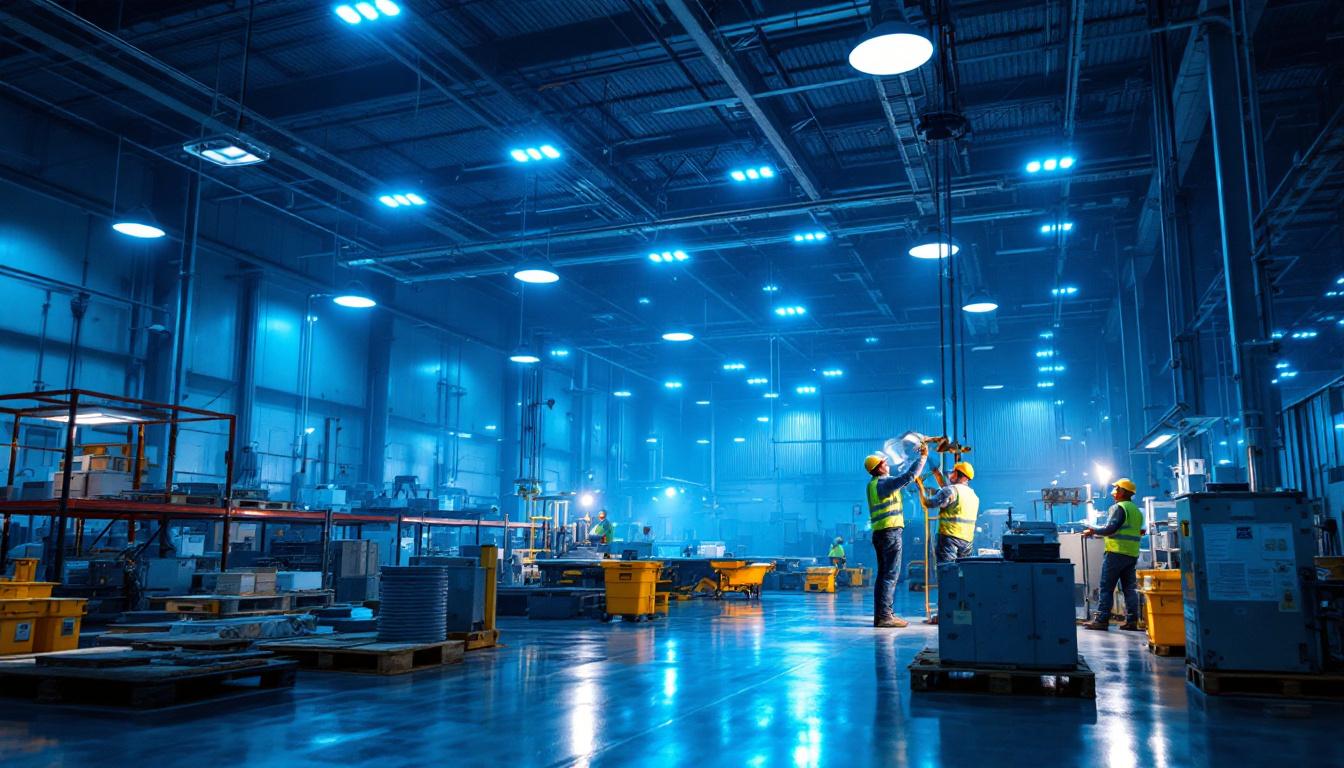
Small can lighting, often referred to as recessed lighting, has become a staple in modern interior design. Its sleek, unobtrusive design allows for a clean aesthetic while providing effective illumination. For lighting contractors, understanding the nuances of small can lighting is essential for delivering quality installations that meet client expectations.
This article aims to demystify small can lighting, covering its benefits, installation techniques, and considerations that contractors should keep in mind. By the end, contractors will have a comprehensive understanding of how to effectively utilize small can lights in their projects.
One of the primary advantages of small can lighting is its versatility. These fixtures can be used in various settings, from residential homes to commercial spaces, and can be tailored to fit different design themes. Whether illuminating a cozy living room, highlighting artwork in a gallery, or providing task lighting in a kitchen, small can lights can be strategically placed to enhance the overall ambiance. Additionally, they are available in a range of styles and finishes, allowing contractors to match them seamlessly with existing decor or to create a striking contrast that draws the eye.
Moreover, energy efficiency is a significant consideration in today’s lighting solutions, and small can lights often come equipped with LED options. These energy-efficient bulbs not only consume less power but also have a longer lifespan compared to traditional incandescent bulbs. This aspect is particularly appealing to environmentally conscious clients looking to reduce their carbon footprint and lower their energy bills. As contractors, being knowledgeable about the latest advancements in LED technology and the benefits of dimmable options can further enhance the value you provide to your clients, ensuring that their lighting solutions are both beautiful and sustainable.
One of the most significant advantages of small can lighting is its ability to save space. Unlike traditional fixtures that can protrude from the ceiling, recessed lights fit snugly within the ceiling itself. This design not only maximizes headroom but also allows for more flexible furniture arrangements, making it ideal for smaller rooms.
Moreover, the compact nature of small can lights means they can be strategically placed to enhance the overall design of a space. Whether it’s highlighting artwork, illuminating a kitchen island, or providing ambient lighting in a living room, these fixtures can be tailored to suit various needs. This adaptability not only helps in creating a visually appealing environment but also ensures that every corner of the room is effectively lit, eliminating dark spots that can make a space feel cramped or uninviting. Additionally, their unobtrusive design allows homeowners to maintain a clean and uncluttered ceiling line, which is particularly beneficial in modern minimalist interiors.
Small can lighting offers unparalleled versatility. Available in various sizes, shapes, and finishes, they can complement any interior style—from contemporary to traditional. This adaptability makes them a favorite among designers and contractors alike.
Additionally, small can lights can be equipped with different types of bulbs, including LED, incandescent, and halogen, allowing contractors to customize the lighting quality and energy efficiency based on client preferences. This flexibility is crucial in meeting the diverse demands of homeowners. Furthermore, the ability to dim these lights adds another layer of versatility, enabling users to create the perfect ambiance for any occasion—from bright, focused lighting for tasks to soft, warm lighting for relaxation. The integration of smart technology with small can lights also allows for remote control and automation, making it easier than ever to adjust lighting settings to fit the mood or time of day.
With the growing emphasis on sustainability, energy efficiency has become a key consideration for many homeowners. Small can lights, particularly those fitted with LED bulbs, consume significantly less energy compared to traditional lighting options. This not only reduces electricity bills but also contributes to a lower carbon footprint.
Contractors can leverage this benefit by educating clients on the long-term savings associated with energy-efficient lighting solutions. Providing options that align with eco-friendly practices can enhance a contractor’s reputation and appeal to environmentally conscious consumers. Furthermore, the longevity of LED bulbs means less frequent replacements, which not only saves money but also reduces waste. By promoting the use of small can lighting, contractors can help homeowners make informed decisions that benefit both their wallets and the environment, ultimately fostering a more sustainable lifestyle. As energy-efficient technology continues to evolve, the options available for small can lights are likely to expand, offering even more innovative solutions for lighting design.
Proper placement of small can lights is crucial for achieving the desired lighting effect. Before installation, contractors should assess the space and determine the best locations for the fixtures. This involves considering factors such as ceiling height, room dimensions, and the intended use of the area.
For instance, in a kitchen, placing small can lights directly above workspaces can provide focused illumination for cooking and meal preparation. In contrast, living areas may benefit from a more dispersed arrangement to create an inviting atmosphere. Planning the layout carefully can significantly enhance the functionality and aesthetic appeal of the space.
When installing small can lighting, it is essential to adhere to electrical codes and safety standards. Contractors must ensure that the wiring is appropriately rated for the fixtures being used, taking into account the wattage of the bulbs and the overall load on the circuit.
Additionally, using the right type of housing for the can lights is critical. There are various options available, including new construction and remodel housings, each designed for specific installation scenarios. Understanding the differences and selecting the appropriate housing can prevent complications during the installation process.
Another important aspect of small can lighting installation is managing insulation and air leakage. Contractors should be aware that recessed lights can create gaps in insulation, leading to energy loss and increased heating or cooling costs. To mitigate this, it is advisable to use airtight housings and ensure proper sealing around the fixtures.
Furthermore, contractors should consider the type of insulation used in the ceiling. In some cases, it may be necessary to use IC-rated (Insulation Contact) fixtures that can safely come into contact with insulation without posing a fire hazard. This attention to detail not only enhances energy efficiency but also contributes to the overall safety of the installation.
Adjustable small can lights, often referred to as gimbal fixtures, offer the ability to direct light where it is needed most. This feature is particularly beneficial in spaces where artwork or architectural details need to be highlighted. By allowing for directional lighting, gimbal fixtures provide versatility that standard recessed lights cannot.
Contractors should consider incorporating adjustable fixtures into their designs, especially in areas where flexibility in lighting is desired. This adaptability can enhance the overall functionality of the space and provide clients with greater satisfaction.
The trim of small can lights plays a significant role in the overall look and feel of the installation. There are various trim styles available, including baffle, reflector, and wall wash trims, each offering different lighting effects and aesthetics. Choosing the right trim can enhance the visual appeal of the fixtures and complement the room’s design.
Contractors should be familiar with the different trim options and their applications. For example, baffle trims are excellent for reducing glare, while reflector trims can provide a more focused beam of light. Educating clients on these choices can help them make informed decisions that align with their design vision.
As technology continues to advance, smart lighting solutions have become increasingly popular. Small can lights can now be integrated with smart home systems, allowing for remote control and automation of lighting. This feature not only enhances convenience but also adds a modern touch to any home.
Contractors should stay updated on the latest smart lighting technologies and be prepared to offer clients options that incorporate these innovations. By doing so, they can position themselves as knowledgeable professionals in a rapidly evolving industry.
One of the most common challenges contractors face during small can lighting installation is encountering ceiling joists. These structural elements can limit the placement of recessed lights, making it difficult to achieve the desired layout.
To overcome this issue, contractors may need to adjust their plans or use specific mounting techniques that allow for proper installation without compromising structural integrity. Utilizing tools such as joist hangers or adjustable brackets can help navigate these obstacles effectively.
Heat management is another critical consideration when installing small can lights. Traditional incandescent bulbs can generate significant heat, which may lead to overheating and potential fire hazards. To address this, contractors should recommend energy-efficient bulbs, such as LEDs, which produce less heat and are safer for use in recessed fixtures.
Additionally, ensuring proper ventilation around the fixtures can help dissipate heat and maintain a safe environment. Educating clients about the importance of heat management can further enhance the safety and longevity of the installation.
Managing client expectations is vital in any lighting project. Contractors should take the time to educate clients about the capabilities and limitations of small can lighting. This includes discussing factors such as brightness, beam angles, and the impact of different bulb types on the overall lighting effect.
By setting realistic expectations and providing clear explanations, contractors can foster trust and satisfaction with their clients. This proactive approach can lead to repeat business and referrals, ultimately benefiting the contractor’s reputation and success.
Small can lighting offers numerous advantages, from space efficiency to versatility in design. For lighting contractors, understanding the intricacies of installation, types of fixtures, and common challenges is essential for delivering high-quality results that meet client needs.
By staying informed about the latest trends and technologies in small can lighting, contractors can position themselves as industry leaders. Emphasizing energy efficiency, safety, and client education will not only enhance the quality of installations but also contribute to the overall satisfaction of clients.
Ultimately, small can lighting is more than just a functional choice—it’s an opportunity for contractors to showcase their expertise and creativity in illuminating spaces effectively. By embracing this lighting solution, contractors can elevate their projects and provide clients with beautiful, well-lit environments.
Ready to take your small can lighting installations to the next level? At LumenWholesale, we provide lighting contractors with the high-quality, spec-grade lighting products you need to excel in your projects. Our commitment to unbeatable wholesale prices means you can access superior lighting solutions without the extra costs associated with local distributors. With our vast selection that meets rigorous industry standards, you can trust in the performance and reliability of every fixture you install. Plus, with the convenience of free shipping on bulk orders, you can enjoy premium lighting at the best value — no hidden fees, no compromises. Elevate your lighting game and give your clients the beautifully lit spaces they deserve. Discover the ideal mix of quality, affordability, and convenience at LumenWholesale.

Explore how island light fixtures are transforming the approach of lighting contractors, enhancing both aesthetics and functionality in modern projects.

Discover the insider secrets lighting contractors use to master modern lamp post lights.

Explore the advantages and challenges lighting contractors face when working with the General Electric Distribution Center.

Discover the transformative potential of ceiling light fixture mounts in modern lighting design and installation.